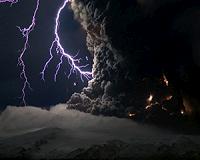| . |  |
. |
NASA Jet Propulsion Laboratory Moffett Field CA (JPL) May 06, 2010 A little extra carbon dioxide in the air may, unfortunately, go further towards warming Earth than previously thought. A team of British and U.S. researchers have uncovered evidence [1] that Earth's climate may be up to 50 percent more sensitive to long-term increases in atmospheric carbon dioxide than current climate models predict. The reason for the underestimation, they say, may be due to long-term changes in ice sheets and vegetation that are not well represented in today's global climate models. Just how much will global temperature rise in response to increases in atmospheric carbon dioxide? This is one of the key questions that climate scientists need to answer. According to the climate models used in the most recent report from the Intergovernmental Panel on Climate Change (IPCC), doubling the amount of carbon dioxide in the atmosphere from pre-industrial levels is expected to warm Earth by about 3 degrees Celsius (5 degrees Fahrenheit), once the atmosphere and oceans spend a few years or decades adjusting and reaching a balance. But according to a recent study by a team of researchers that includes Gavin Schmidt of NASA's Goddard Institute for Space Studies, Earth's climate is also influenced by other, much slower processes. These include changes in ice sheets, vegetation and aerosols, for example, that take place over hundreds and thousands of years. Because of their complexity and long timescales, these processes are almost impossible to integrate into today's climate computer models. As a result, it has been difficult to know just what their effect on Earth's climate sensitivity would be. To learn more about this sensitivity, Schmidt and his co-authors looked back 3 million years into Earth's past. They used a computer model that describes the oceans and atmosphere to predict, retroactively, the climate of the mid-Pliocene - a period when both global temperatures and atmospheric carbon dioxide concentrations were higher than today. The model substantially underestimated just how high temperatures would go. When the researchers adapted the model to include the effects of long-term climate changes in vegetation and ice sheets, they were able to get a much closer representation of the warming in the Pliocene era. The team found that it took much lower concentrations of atmospheric carbon dioxide to recreate the Pliocene's warm climate than current models - which consider only the relatively fast-adjusting components of the climate - predict. Pliocene carbon dioxide levels are estimated to have been around 400 parts per million by volume (ppmv), while according to current simulations it would take 500 to 600 ppmv of carbon dioxide to bring about the warm temperatures of the Pliocene. As a result, the researchers estimate that Earth's response to elevated concentrations of atmospheric carbon dioxide is 30 to 50 percent greater than previously calculated. In other words, the climate is more sensitive to carbon dioxide than we thought. This higher sensitivity of the climate should be taken into account, the team concludes, when targets are set for limiting greenhouse gas emissions. The results of the study appear in Nature Geoscience.
Share This Article With Planet Earth
Related Links Jet Propulsion Laboratory The Air We Breathe at TerraDaily.com
 Volcanic Ash Research Shows How Plumes End Up In The Jet Stream
Volcanic Ash Research Shows How Plumes End Up In The Jet StreamBuffalo NY (SPX) Apr 29, 2010 A University at Buffalo volcanologist, an expert in volcanic ash cloud transport, published a paper recently showing how the jet stream - the area in the atmosphere that pilots prefer to fly in - also seems to be the area most likely to be impacted by plumes from volcanic ash. "That's a problem," says Marcus I. Bursik, PhD, one of the foremost experts on volcanic plumes and their effect on ... read more |
|
| The content herein, unless otherwise known to be public domain, are Copyright 1995-2010 - SpaceDaily. AFP and UPI Wire Stories are copyright Agence France-Presse and United Press International. ESA Portal Reports are copyright European Space Agency. All NASA sourced material is public domain. Additional copyrights may apply in whole or part to other bona fide parties. Advertising does not imply endorsement,agreement or approval of any opinions, statements or information provided by SpaceDaily on any Web page published or hosted by SpaceDaily. Privacy Statement |